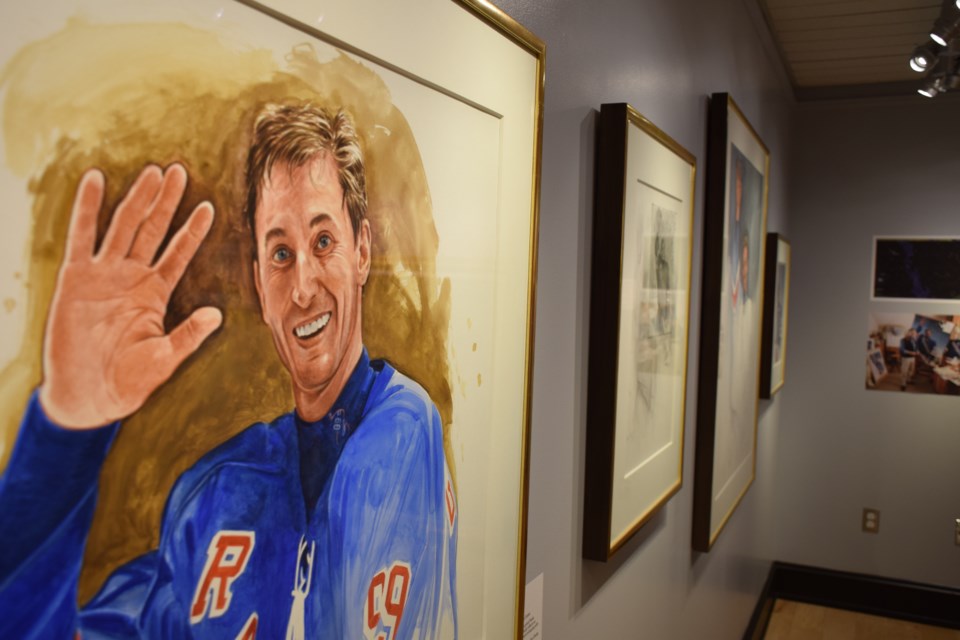Ken Danby had an artistic touch with a common touch.
Danby has long been celebrated as one of this country’s iconic painters, and reputed to be its finest ever watercolorist.
Guest curator Judith Nasby, curator Emerita of the Art Gallery of Guelph, has assembled a number of Danby’s seminal works, and some of the studies that went into their creation, into Ken Danby: Five Decades. It opens on Friday, 6:30 p.m. at the Guelph Civic Museum.
Many of the works come from the Art Gallery of Guelph’s permanent collection, acquired by Nasby during her many years as curator of the gallery. Other works come from the Ken Danby estate and the University of Guelph collection.
Nasby was on hand on Tuesday for the final installation work on the third-floor exhibit, which features Danby’s famous painting The Great Farewell, of hockey legion Wayne Gretzky, and the sketches for it.
“Ken Danby helped to express our national psyche by celebrating our national game, painting our famous landscapes, and promoting the conservation of our heritage buildings through his own example,” Nasby said. She brought those three themes into the exhibition.
Ken Danby: Five Decades, she said, is an attempt to create a retrospective of the artist’s work in a relatively small space. It runs concurrently with the much larger Beyond the Crease: Ken Danby, which opened in late October at the Art Gallery of Hamilton.
Among the works at the Guelph Civic Museum is a painting of a detail of Guelph’s popular Riverside Park carousal and its carved wooden horses. It rests on a mechanical easel that Danby designed himself, one that swivels in a multitude of ways, and can be readily adjusted to follow the shifting light of the sun.
Born in Sault Ste. Marie, educated at the Ontario College of Art and Design in Toronto, Danby settled on a historic property on the outskirts of Guelph. The old Armstrong Mill, situated along a tributary of the Speed River, is one of the most picturesque property’s in the region. Over a period of many years, Danby restored it, transforming it into a living and studio space.
The exhibition also features a small watercolour painting of a portage cove, possibly in Algonquin Park, where, like members of the fabled Group of Seven, Danby often camped, sketched and paddled his canoe. He died of a heart attack in Algonquin in 2007, while canoeing. He was 67.
“I feel that Ken needs a re-look 10 years after his death, particularly for the people of Guelph,” Nasby said. “Many people don’t know his work and the extent of it.”
Nasby said Danby struggled as an artist in the 1980s and 90s. It was a period when irony was the fashion in art. His work did not fit the fashion.
“Because there is absolutely nothing ironic in Ken’s work,” she said. “It’s thoughtful, and there is a lot of meaning in the imagery, now that the art world can see them much clearer.”
At an early stage in his artistic career Danby decided not to follow the trend toward of abstraction, Nasby said. He took in an exhibition of Andrew Wyeth’s paintings in Buffalo and discovered his calling as a realist. He had to teach himself to paint in that manner.
“He had this enormous drive to learn this very difficult renaissance technique, and to polish his watercolour skills,” Nasby said. “He was a completely dedicated painter.”
Ken Danby: Five Decades runs until Jan. 15, 2017.
